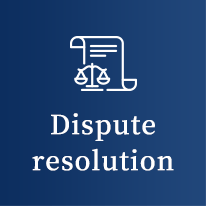Provisional Seizure for Debt Collection
- 1 What is provisional seizure?
- 2 Requirements for provisional seizure
- 3 Prohibition of Disposition of Property by Provisional Seizure
- 4 Psychological pressure on debtors through provisional seizure
- 5 Procedure for provisional seizure (principle of secrecy)
- 6 Debt collection using provisional seizure
- 7 Provision of collateral for a motion for provisional seizure
- 8 Refund of deposit money
- 9 Order of Seizure, Order of Assignment
What is provisional seizure?
Provisional seizure is a procedure whereby a creditor provisionally seizes its property by court order so that the debtor cannot dispose of it without permission. The creditor must submit a petition for provisional seizure to the court and obtain an order of provisional seizure. The court order of provisional seizure is served to the debtor or a third party debtor, and the debtor or third party debtor is prevented from disposing of the provisionally seized property without permission.
Requirements for provisional seizure
A provisional seizure may be issued when there is a risk of becoming unable to carry out compulsory execution of a claim for the payment of money, or when there is a risk that significant difficulties may arise in carrying out compulsory execution (Article 20, paragraph 1 of the Civil Preservation Law). Therefore, the claim held by the creditor must be a monetary claim. In addition, in order to obtain an order of provisional seizure, the creditor who is the petitioner must make a prima facie showing to the court that he/she has a claim. The creditor does not need to have a final and binding judgment or notarized document, but in most cases, the creditor must be able to prove the existence of his/her claim to some extent through a contract or other document. Since an order of provisional seizure must be issued for a specific object, it is necessary to specify the object of the provisional seizure (the debtor’s property), such as bank deposits, wage claims, real estate, automobiles, etc. (Civil Provisional Remedies Law, Article 21).
Prohibition of Disposition of Property by Provisional Seizure
In the case of provisional seizure, the debtor is prohibited from disposing of the provisionally seized property. From the creditor’s perspective, this means that the creditor will have property that will serve as an allowance for his/her claim in the event that he/she obtains a final and binding judgment and executes a compulsory execution in the future.
Psychological pressure on debtors through provisional seizure
When a provisional seizure of real estate is made, a statement that a provisional seizure has been made will be entered in the real estate registry. If a bank deposit is provisionally seized, the court will notify the financial institution, which is the third party debtor, of the provisional seizure decision, so the financial institution will know that the depositor has been provisionally seized, and the credibility of the debtor will be seriously damaged. Since the debtor cannot leave the provisional seizure in place indefinitely, the debtor often proposes a settlement with the creditor.
Procedure for provisional seizure (principle of secrecy)
Although provisional seizure is done by submitting a petition for provisional seizure to the court, if the debtor becomes aware that a petition for provisional seizure has been filed, the debtor may dispose of the property before an order of provisional seizure is issued. Therefore, the principle of secrecy is at work in provisional seizure, and it is necessary to have the decision issued before the debtor is informed. Therefore, unlike ordinary court proceedings, etc., no summons to the debtor or interrogation of the debtor is conducted during the decision-making process for provisional seizure.
Debt collection using provisional seizure
In a case where a client of our firm had lent 10 million yen to a business partner and had prepared a money loan deed, but the debt was not paid, we filed a provisional attachment against the debtor’s home at the client’s request and obtained a decision of provisional attachment. The provisional seizure of the home put the debtor under strong psychological pressure as he feared that his home would be taken, and the debtor proposed to withdraw the provisional seizure as he would pay the full amount of 10 million yen, and we were able to collect the full amount of the debt.
Provision of collateral for a motion for provisional seizure
In the procedure for a decision of provisional seizure, a prima facie showing must be made as to the right to be preserved and the necessity for preservation (Article 13, Paragraph 2 of the Civil Preservation Law). While in an ordinary court case, a level of proof that can be called a preponderance of evidence is required, in a temporary restraining order, a prima facie showing (i.e., evidence to the extent that it can be said to be plausible) is considered sufficient. Therefore, the court will issue a decision while it is not necessarily certain whether the debtor’s claim really exists or not, and in some cases, the debtor may incur significant damages due to the non-existence of the claim. Therefore, when issuing an order of provisional seizure, the court usually makes it a condition that the petitioner must provide security (Article 14 of the Civil Provisional Remedies Law). The amount of the security deposit is set at 10% to 15% of the amount of the claim. The provisional seizure order is issued when the petitioner submits a copy of the certificate of deposit to the court and shows the court that he/she has deposited the security money. At the request of one of our clients, we have deposited several tens of millions of yen in collateral to provisionally seize shares of a listed company held by the debtor.
Refund of deposit money
The collateral deposited at the time of provisional seizure is not refundable until a final and binding judgment, settlement record, or written consent of the other party is obtained. If it takes several years to obtain a final judgment, the deposited money will remain restrained during that time. It is always important to keep in mind that when performing a provisional garnishment, the collateral money will be held for a long period of time. In the event of a judicial settlement, it is also important to include a statement in the settlement stipulation that the debtor (on its part) agrees to the refund of the deposit money, along with the withdrawal of the provisional seizure.
Order of Seizure, Order of Assignment
If a creditor who has made a provisional seizure prevails in the main lawsuit, the judgment of victory can be used as a title of obligation to make a final seizure of the provisionally seized property. If it is a bank deposit, the creditor can then obtain an change order or a collection order and receive a refund of the deposit from the financial institution and apply it to his/her own claim. In addition, by presenting the winning judgment in the main case to the depository, the creditor can receive a refund of the collateral.










